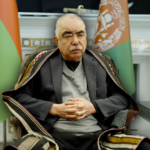Abstract
(Pakistan’s water-related issues have domestic and external dimensions that must be tackled simultaneously. The country’s first ever National Water Policy (April 2018) and the National Security Policy of Pakistan (2022-26) recognized the urgency of addressing both the domestic and external features of our water worries. The National Security Policy declared that unhindered access to our transboundary waters is “a national security imperative”.
This essay focuses on the larger part of the external dimension, dealing with the India-Pakistan bilateral Indus Waters Treaty (IWT) which has recently come under unprecedented stress. The paper emphasizes the need for broader water-related cooperation between its signatories who are the main riparians of the Indus River Basin. It recalls wide-ranging suggestions made by a large number of experts and civil society representatives at several Track 2 dialogues. The implementation of those ideas would be possible only when India and Pakistan summon the political will to carry out a comprehensive dialogue on the water resources of the Indus Basin. The inability of the two countries to initiate action has not diminished the relevance and rationale of the recommendations. – Author)
Pakistan has to contend with the twin challenges of rapidly declining per capita availability and deteriorating quality of fresh water. Our water woes have been caused by the over six-fold increase in population (from 32 million in 1947 to 241 million in 2023); unregulated urban sprawl which causes greater waste of water than planned human settlements; economic development; mounting needs of all water-user sectors, especially agriculture; and, last but not least, chronic governance and management deficits.
The impacts of climate change—most of which affect water resources—have aggravated Pakistan’s water worries. With the per capita renewable availability of water having plummeted to 908 cubic meters (m/3 year) in 2022, Pakistan has become a water scarce country. It is, in fact, 14th among the 17 “extremely highwater risk countries” in the world. The water emergency warrants urgent measures to prevent worsening food and health crises and sluggish economic growth that will lead to higher and deeper levels of poverty and widespread despair and deprivation.
Pakistan’s water-related issues have domestic and external dimensions that must be tackled simultaneously. The country’s first ever National Water Policy (April 2018) and the National Security Policy of Pakistan (2022-26) recognized the urgency of addressing both the domestic and external features of our water worries. The National Security Policy declared that unhindered access to our transboundary waters is “a national security imperative”.
This essay focuses on the larger part of the external dimension, dealing with the India-Pakistan bilateral Indus Waters Treaty (IWT) which has recently come under unprecedented stress. The paper emphasizes the need for broader water-related cooperation between its signatories who are the main riparians of the Indus River Basin. It recalls wide-ranging suggestions made by a large number of experts and civil society representatives at several Track 2 dialogues. The implementation of those ideas would be possible only when India and Pakistan summon the political will to carry out a comprehensive dialogue on the water resources of the Indus Basin. The inability of the two countries to initiate action has not diminished the relevance and rationale of the recommendations.
Pakistan’s transboundary water challenges are defined by its critical dependence for over 90 % of its surface water on the Indus River Basin (IRB) which include flows from across its frontiers accounting for 78% of the Basin’s assets. The IRB comprises seven major rivers: the three eastern rivers, namely, Beas, Ravi, and Sutlej; the three western rivers, namely the Indus, the Chenab and Jhelum; and the Kabul River originating in Afghanistan as well as dozens of smaller rivers. All the seven major tributaries of the Indus River originate in or transit through the territories of our two neighbouring countries.
The Indus Waters Treaty (IWT), signed by India and Pakistan on 19 September 1960, elaborates their entitlements and obligations in respect of the eastern and western rivers. But it is silent on the Kabul River which contributes 20% of the assets of the IRB when it drains into the Indus at the end of its hundred plus kilometers long journey through Khyber Pukhtunkhwa during which it receives the rich flows of the Swat River.
The Kabul River (along with the Kurram and Gomal Rivers which are indispensable for the water needs of Waziristan) has flowed from Afghanistan into Pakistan for millennia without any impediment. But the absence of an agreement regularising water sharing raises recurring fears in Pakistan that, in case Afghanistan builds more multi-purpose dams on the river to meet the growing consumption, electricity, and food needs of the three and half million residents of its capital city Kabul, its flows into Pakistan would be reduced. While the Afghan and Pakistani governments have not formally discussed matters relating to the Kabul River Basin, the two countries’ stakeholders attending Track 2 dialogues during 2018-2020, prior to the sudden withdrawal of the United States military forces which precipitated the collapse of the government headed by Ashraf Ghani and the return to power of the Taliban, were broadly supportive of mutually beneficial cooperation and collaboration in respect of the flows of the Kabul. As soon as the situation in Afghanistan allows, Pakistan should seek a dialogue with Afghanistan on cooperation in the optimum utilization of the assets of the Kabul River Basin.
Implementation of the Indus Waters Treaty (IWT)
The IWT had allowed India the exclusive use of the waters of the three eastern rivers. The three western rivers were to flow unhindered into Pakistan, but India was allowed to use small amounts of their waters for human consumption, agriculture, and electricity production by run-of-the-river plants with no live storage. If Pakistan raises objections against the engineering designs of any power plant, India is obliged to pend work on the project until the objections are settled. The IWT requires both countries to exchange data on river flows and floods (Article 6) and recognizes the possibility of mutually beneficial cooperation related to the Indus Basin (Article 7).
The IWT established the Permanent Indus Commission (PIC) consisting of a commissioner from each country to facilitate communication and implementation of its provisions by both Parties. It also created an elaborate 3-tier dispute settlement mechanism: The PIC or high level officials to settle all mutually agreed matters; technical issues to be referred to a ‘Neutral Expert’ designated by the World Bank with the prior approval of the Parties; and a Court of Arbitration to be established by the Permanent Court of Arbitration based in The Hague to resolve disputes of both technical and legal nature. The World Bank is mandated to facilitate the external mediation and arbitration mechanisms.
Since the mid-1970s every method of dispute settlement has been utilized. Discussions between the Foreign Secretaries resolved the differences over the design of the Salal Dam on the Chenab in 1978. The dispute over the Baglihar Dam, also on the Chenab, which arose in 2005 was referred to Raymond Lafitte, an outstanding Swiss civil engineer, who served as Neutral Expert and gave his verdict in 2007. Professor Lafitte’s decision in favor of the Indian design was based on the latest advances in civil engineering but left Pakistan dissatisfied. The dispute over the Kishanganga Dam on the Jhelum was considered by a Court of Arbitration which issued its verdict in 2013. The COA allowed India to go ahead with building the plant but directed it to ensure a fixed quantity of water (8 cumecs) to flow into the river. Pakistan alleged that Indian had not complied with all the directives of the COA. Despite Pakistan’s objections, India completed the construction of the project and Prime Minister Narendra Modi inaugurated the Kishanganga power plant on May 19, 2018, amid much fanfare. However, as noted later, the dispute is far from over.
The only Indian project that has defied all efforts at bilateral level, including high level discussions, is what Pakistan describes as the Wullar Barrage while India calls it the Tulbul Navigation Project – the differing nomenclature reflecting the substantial positions of the two Parties. A high-level meeting of Indian Government officials in September 2016 reportedly discussed the continued suspension of work on the project but did not take a decision. The project has evidently lost its urgency for the Indian Government.
During the past nearly five decades, the only differences and disputes concerning the implementation of the IWT relate to Indian hydropower projects on the western rivers. The sole preoccupation of all the 118 meetings of the Permanent Indus Commission held so far has been Indian power projects as if the only objective of the Treaty was to enable India to carry out its ambitious hydropower development programme on the western rivers of the Indus Basin. India has already built thirty (30) medium size and large hydropower plants on the western rivers and another 14 are likely to be completed by 2030. The multiple plants have accentuated concerns in Pakistan over the accumulated capacity accruing to India to manipulate the flow of water to Pakistan’s detriment.
Indian and Pakistani governments have time and again reiterated their support for the IWT. However, Pakistani officials voice a number of complaints about Indian attitude and behavior concerning their hydropower projects. They allege that India often starts building the civil works of the power plant without informing Pakistan; it provides insufficient data and information and deliberately stalls the implementation of the binding decisions of external mediation or arbitration. Pakistani officials are not pleased that Indians often divert flood water into the dry beds of the eastern rivers causing much hardship on the Pakistan side. This has happened in a big way during August 2023 in the case of Sutlej and Beas, causing huge damage to infrastructure and people on the Pakistani side.
Indians, too, have complaints about Pakistan’s attitude. In private conversations, Indians dismiss all Pakistani complaints and accuse Pakistan of trying to impede Indian dam construction allowed under the IWT. They contend that the verdicts of both the Neutral Expert and the Court of Arbitration in the disputes over the Baglihar and the Kishanganga power plants had repudiated Pakistan’s objections.
Water resources and climate change experts from within and outside the Subcontinent have pointed out that the IWT, having been negotiated during the 1950s, does not address several issues which either did not exist or have become serious in recent decades. These issues include the effects of climate change, such as the rapid melting and erosion of the glaciers storing huge quantities of water in the Himalayas-Karakoram Hindu Kush (HKH); the frequent and more intense extreme weather events like floods and droughts; the erratic patterns of monsoon winds and precipitation in terms of timing and volume; declining water flows in the upstream of the western rivers; excessive abstraction of ground water in both countries threatening the Indus Aquifer; the growing pollution of water from the dumping of industrial and agricultural residue in the catchment areas of the western rivers before they cross into Pakistan; and the imperative of maintaining ecological flows in the eastern rivers.
India-Pakistan Track 2 dialogues on the Indus River Basin issues
As noted earlier, the water-related discussions between Indian and Pakistani officials during the meetings of the Indus Commission have been wholly devoted to the Indian hydropower projects. The two countries have never discussed the streamlining of the erratic, now on, now off exchange of data under Article 6 of the IWT. Prospects of broader cooperation on the Indus Basin as envisioned in Article 7 have not been touched at all.
During the decade 2010-2020, a large number of Indian and Pakistani water and climate change experts, economists, and academicians took part in half a dozen or so Track 2 discussions, funded and convened by external partners, and facilitated by Indian and Pakistani civil society organizations.
The discussions covered the whole spectrum of issues related to the Indus Basin, especially those not addressed by the IWT. The suggestions reflecting the core understandings reached at the dialogues have been recorded in elegantly crafted documents and are available online. Significant India-Pakistan Track 2 dialogues include the following:
- Discussions convened by the Stimson Center, Washington DC, in collaboration with the Sustainable Development Policy Institute (SDPI), Islamabad and the Observer Research Foundation (ORF), New Delhi. The report of the outcome of the discussions ‘Connecting the Drops: An Indus Basin Roadmap for Cross-border Water Research and Policy Coordination’ was published by the Stimson Center in 2013.
- Discussions co-organized by the Centre for Dialogue and Reconciliation (CDR), New Delhi, and the Jinnah Institute (JI), Islamabad. The report ‘Indus River Basin: Common Concerns and the Road-map to Resolution’, compiled by Dr Shakil Ahmad Romshoo, and published by the CDR in 2012 contains the outcome of the understandings reached during the discussions. The participants recognized the need for robust knowledge and impeccable data to inform decision-making by the Governments of India and Pakistan and their cooperation on issues relating to the Indus Basin.
- Discussions funded and organized by the South Asia Center of the Atlantic Council, Washington DC focusing on data-related cooperation. The outcome of the discussions held in Pakistan and the US can be found in a report titled ‘ Track 2 Water Cooperation Dialogue’ published by the Atlantic Council in 2014. The suggestions agreed upon have also been reflected in Chapter 7 on ‘Data Issues’ in Ashfaq Mahmood’s book, ‘Hydro-Diplomacy: Preventing Water War between Nuclear Armed Pakistan and India’, published by the Institute of Policy Studies, Islamabad in 2018.
- Discussions were carried out by the members of the Task Force on Climate Change established by the co-sponsors of the Chaophraya Dialogue, the Jinnah Institute, Islamabad, and the Australia-India Institute, Melbourne, Victoria, Australia. The outcome of the discussions is contained in the ‘Report of the Chaophraya Dialogue Task Force on Climate Change’ issued by the Jinnah Institute in 2017.
The annual sustainable development conferences convened by the Sustainable Development Policy Institute (SDPI), Islamabad since its inception in 1992 have invariably included discussions on peace and cooperation between India and Pakistan, including cooperation on mitigating the effects of climate change.
The suggestions which seemed to enjoy broad-based support among the participants of the aforementioned discussions are noted below:
a) Joint research studies on the impacts of climate change on water resources, including the HKH glaciers, in collaboration with the scientific agencies and institutions in the United States (US), China and Europe with satellite-based remote sensing capacity, to generate and disseminate non-politicized, reliable data on glacial melting trends.
b) A study to probe the reasons for the diminishing water availability upstream in India, resulting in reduced water flowing into Pakistan.
c) Enhanced preparedness for, and management of, climateinduced extreme events, including glacial lake outburst floods (GLOFS).
d) Joint monitoring of the HKH glaciers, in collaboration with relevant regional and international agencies, including the International Centre for Integrated Mountain Development (ICIMOD) based in Kathmandu (Nepal).
e) Studies on water pollution from industrial and agricultural runoff in the catchment areas of the western rivers.
f) Regular and timely exchange of hydrological data concerning dry season flow levels as well as heavy precipitation events for use in, among other purposes, flood control.
g) Cooperation in promoting modern micro-irrigation methods and technologies for conservation and optimum use of water.
h) Promotion of water-use efficiency by non-agricultural user sectors.
i) Joint research study evaluating the cumulative environmental impacts of multiple dams and cascades of run-of-the-river power projects on a single river.
j) Increasing the knowledge base on monsoon variability trends.
k) Joint studies on the shared Indus Aquifer and measures to ensure its sustainability.
l) Study on the imperative of environmentally and ecologically necessary flows in the eastern rivers.
m) Consideration of appointment of a standing Board of Umpires for swift and timely resolution of disputes, with reference to Annex G of the IWT on Court of Arbitration. This proposal aims to reduce the heavy cost of mediation and arbitration and to ensure speedier resolution of disputes.
n) Creation of a web-based data bank which would serve as a repository of all data links and resources that would be useful for analysts and researchers.
Recent Developments
India-Pakistan Track 2 dialogues were attended by respected experts and civil society representatives; the outcomes of the discussions reflected widespread concerns over the looming water crisis which were echoed in the reports of the Inter-Governmental Panel on Climate Change (IPCC) and climate research centres on the impacts of climate change.
There has been no headway on the follow up of the recommendations of the Track 2 dialogues because of the deterioration of the perennially problematic relations between India and Pakistan. In September 2016, India, citing alleged Pakistani complicity in a terrorist attack on an Indian military base in Uri (Indian- administered Jammu and Kashmir), announced its decision to not participate in the South Asian Association for Regional Cooperation (SAARC) Summit hosted by Pakistan in November. New Delhi lobbied with other SAARC member countries to support its boycott of the Summit. India’s sabotage of the Summit paralyzed the main inter-governmental organization of South Asia for regional cooperation which had initiated several significant processes of regional cooperation on climate change issues. The subsequent downscaling of the diplomatic missions of India and Pakistan upended travel and all kinds of bilateral contacts and destroyed any hope of resumption of bilateral dialogue.
On 5 August 2019, the Indian Government decided to unilaterally change the legal and political status of the disputed Jammu and Kashmir state, in violation of the UN Security Council resolutions and the IndiaPakistan Simla Accord. New Delhi abolished the special status of J&K by repealing Article 370 of the Indian Constitution and divided the state into two federal territories. Pakistan rejected the Indian moves concerning J&K and has carried out a global campaign against it. The majority of Kashmiris, especially those belonging to the Kashmir Valley, have rejected New Delhi’s moves. No Kashmiri politician has thus far shown willingness to work with the Indian central government in operationalizing the new political dispensation.
Despite the marked deterioration in India-Pakistan relations the Permanent Indus Commission has held its meetings, perhaps because India is keen to carry on its feverish drive to build hydroelectric projects using the waters of the western (Pakistani) rivers.
During the PIC sessions in 2017-2022, Pakistan raised its objections to the designs of the Kishanganga Project and the 850 MW Ratle plant on the Chenab in the Kishtwar district of Jammu and Kashmir. In July 2015 Pakistan proposed the appointment of a Neutral Expert to settle the differences over the two projects. India argued that the PIC could resolve the differences. In March 2016 Pakistan demanded the establishment of a Court of Arbitration contending that the issues relating to Kishanganga and Ratle HEPs involved technical and legal points. In August 2016 the Indian Government agreed to the appointment of a Neutral Expert but Pakistan refused to withdraw its demand for the establishment of a Court of Arbitration. The World Bank unsuccessfully tried to persuade the two countries to agree upon a method of addressing the issues. On 12 December 2016, the WB announced a “pause” in acting on the method of resolving the ongoing dispute and urged the two governments to try to come up with a jointly agreed alternative course of action.
In March 2022, the World Bank announced its decision to end its “pause” and in October announced the appointment of Michel Lino, President of the International Commission on Large Dams (ICOLD), to serve as Neutral Expert. It also appointed Sean Murphy, Law Professor at George Washington University, to chair the Court of Arbitration for the projects against which Pakistan had raised objections. Both Michel Lino and Sean Murphy are outstanding experts. India argued that the operation of two parallel processes for addressing the same issues carried the risk of contradictory outcomes which would create a legally untenable situation that may endanger the Treaty. The World Bank countered the Indian contention saying that “the lack of success in finding an acceptable solution over the past five years is also a risk to the Indus Waters Treaty”. The Court of Arbitration announced the holding of its first meeting on 27 January 2023.
On 25 January the Indian Indus Commissioner, in a communication addressed to his Pakistani counterpart, conveyed his Government’s notice proposing “ inter- governmental negotiations to modify the Indus Waters Treaty…” under Article 12 (3) of the IWT. The said article states: “The provisions of this Treaty, or the provisions of this Treaty as modified under provisions of Para 3 shall continue in force until terminated by a duly ratified treaty concluded for that purpose”.
Indian newspapers and electronic media on 27 January reported the Indian move based on official briefing. The newspapers mentioned that Pakistan has to respond to the notice within ninety (90) days (the IWT does not contain any provision for the 90-day notice). The proposed negotiations were meant to “update the Treaty to incorporate the lessons learned over the last sixty-two (62) years.” The reason for the Indian move given in the official briefing was Pakistan’s actions since 2015 pertaining to the Kishanganga plant, especially its demand for a Court of Arbitration. It accused Pakistan of refusal to discuss the contested projects during the sessions of the Indus Commission over five years (2017-22).
The Indian newspapers on 27 January reported the statements of the Pakistan Ministry of Foreign Affairs and the Office of the Attorney General. The Attorney General’s statement rejected the Indian move and described it as “a means of distracting attention from the ongoing proceedings of the Court of Arbitration”. The Foreign Office statement mentioned that the Court of Arbitration had been established under the provisions of the Indus Waters Treaty.
The Court of Arbitration headed by Sean Murphy held meetings in The Hague on 27 and 28 January. It issued a press release on 3 February acknowledging “India’s objection to the Court’s competence”, adding that the objection “must be addressed as a preliminary matter in an expedited proceeding”. The Court would thereafter seek further submissions from the Parties.” On 6 July 2023 the COA unanimously rejected India’s objections and confirmed its competence to consider and resolve the issues raised by Pakistan. The COA is expected to resume its meetings in September 2023.
Michel Lino, serving as Neutral Expert, has also started his work.
On 3 April 2023, Pakistan’s Indus Commissioner informed his Indian counterpart conveying Pakistan’s readiness to listen to India’s concerns regarding the implementation of the IWT. The message reiterated Pakistan’s commitment to the implementation of the Indus Waters Treaty in good faith and to ensure its water security.
The message from Islamabad was acknowledged by the Spokesman of the Indian Ministry of External Affairs (MEA) on 5 April and was reported by Indian newspapers and electronic media. The MEA spokesman promised a “response in consultation with relevant stakeholders.” Islamabad’s response to the Indian move was considered at consultations held by the Foreign Secretary with the Secretary of the Ministry of Water Resources, current and previous Indus Commissioners, and foreign policy experts.
It is notable that whilst the Indian print and electronic media had worked overtime highlighting the official briefing of 26 January accusing Pakistan of “intransigence in handling disputes which had raised questions about the integrity of the Pact”, Mr. S. Jaishankar, the External Affairs Minister, had only stated that “it’s a matter for the two Indus Commissioners to sort out”.
The Indian notice for formal talks on modifying the IWT prompted comments by Indian and international experts. The move was seen as a first shot against a widely acclaimed agreement on shared transboundary rivers, especially one between countries with an adversarial relationship. While predictably the Indian news coverage faithfully reflected the official briefing, independent analysts did not hesitate from expressing their apprehensions. Sushant Samreen, senior Fellow at the now increasingly pro-BJP but otherwise respected think-tank, Observer Research Foundation (ORF) in New Delhi, cautioned the Government “against setting any precedent that could encourage China to intensify its water aggression against India and a Himalayan dam spree”.
Professor Daniel Haines, author of ‘Rivers Divided: Indus Basin Waters in the Making of India and Pakistan’, in a policy brief for the United States Institute for Peace (USIP) issued on 23 February 2023, expressed serious concern over India’s yet unclear intentions. He said that “India might even be looking for an excuse to repudiate the (Indus Waters) Treaty and press on with upstream project development, willing to accept whatever reputational cost might follow”. He said that “if India abrogates the Treaty, Pakistani leaders could view it as a deliberate attempt to destroy their country”. He rules out Pakistan agreeing to modification of the Treaty. Professor Haines is also aware that the BJP stands to gain domestically from taking a tough line on Pakistan and recalls the significant electoral benefits for the BJP from India’s air attacks against Balakot in 2019. He adds that while “discarding the Treaty could harm India’s international reputation, the BJP has consistently prioritized domestic politics over international opinion”. In this regard, he cites “the changes in the constitutional status of Jammu and Kashmir and new laws that are widely seen as targeting Muslims”. Accordingly, Prof. Haines hints at the likelihood that “perhaps India could declare itself free to press with upstream construction, undermining the Treaty even if the text does not change”.
Another analyst referred to what Indian officials have been saying about “turning the Chenab into a Valley of Dams”.
Future Prospects
Hopefully the Court of Arbitration and the Neutral Expert charged with resolving the on-going differences between India and Pakistan over two Indian hydropower projects—the already operational Kishanganga and yet-to-be-built Ratle HEP—would ameliorate the threats to the IWT. It would be hugely tragic if the urgently needed cooperation between India and Pakistan on the sustainability of the Indus Basin becomes a victim of dispute over one or more Indian hydropower projects.
In addition to preserving the Indus Waters Treaty, India and Pakistan should muster the political will to carry out an open ended, comprehensive dialogue between the two countries on all aspects of the looming water crises facing both countries because of multiple preexisting factors which have been amplified by the effects of climate change.
India and Pakistan, being geographically contiguous, share vital ecosystems such as the HKH high altitude glaciers—also described as the Water Towers of South Asia—which feed the rivers of the Indus Basin, and the monsoon winds which precipitate rains that augment the river flows and replenish the Indus Aquifer. Both countries are waterdeficient, although India, blessed with multiple river basins, unlike the single Basin in Pakistan, and having ample storage infrastructure, is considerably better off than Pakistan. Both India and Pakistan have predominately agricultural economies and their rural populations depend on farming and livestock for livelihoods.
India and Pakistan share acute vulnerability to the impacts of climate change and can benefit from collaboration in climate mitigation and adaptation initiatives, including clean energy and energy-use efficiency, forest and mangrove protection, reducing transboundary air pollution, climate compatible agricultural practices, especially micro-irrigation and heat-resistant grain seeds and livestock species. They can also share best practices for ensuring the sustainability of the shared Indus Aquifer threatened by excessive abstraction in both countries.
The water security of both India and Pakistan can be promoted through mutually beneficial cooperation on water resources. The pursuit of this paramount goal should be delinked from other contentious issues.
Should the two South Asian neighbors initiate an all-encompassing conversation on the existential challenges of water security and climate change, they might find the suggestions developed by their experts in Track 2 dialogues in the years 2010-2020 useful in their quest.









